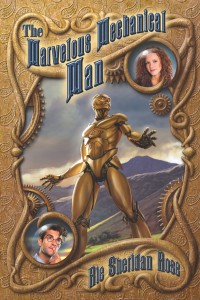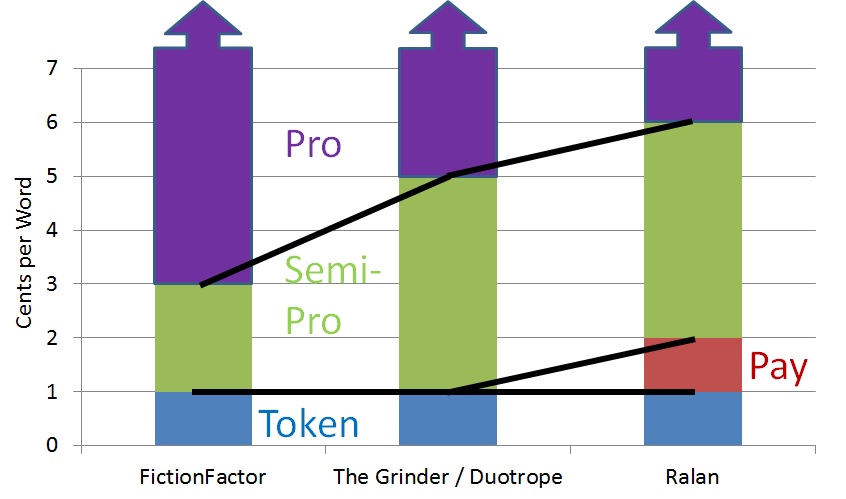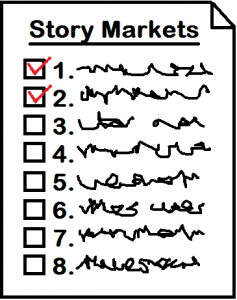 Today I’m delighted to welcome Editor and Author Rie Sheridan Rose to the world of Poseidon’s Scribe. She’s the editor of the forthcoming anthology Avast Ye Airships! as well as being an accomplished author. Among her published novels is The Marvelous Mechanical Man.
Today I’m delighted to welcome Editor and Author Rie Sheridan Rose to the world of Poseidon’s Scribe. She’s the editor of the forthcoming anthology Avast Ye Airships! as well as being an accomplished author. Among her published novels is The Marvelous Mechanical Man. 
On to the interview:
Poseidon’s Scribe: When did you begin writing fiction?
Rie Sheridan Rose: Technically, I began writing when I was a kid, but I began doing it for publication in 1998 when my children’s story “Bedtime for Benny” was chosen as a finalist in the Half-Price Books “Say Goodnight to Illiteracy” contest. My first novel was published in 2000 (after I started it at 12 originally…)
P.S.: What are the easiest, and the most difficult, aspects of writing for you?
R.S.R.: The hardest is having the discipline to actually do the work. I’ve been very bad about procrastination, though I am working on it. The second hardest part is finding markets–but places like ralan.com can help with that.
The easiest is…oh, wow…I’ve never thought about that. For me, the easy part is talking about my writing once it is done. 🙂
P.S.: On your website, you refer to yourself as the Barbadee Poet. What does that mean?
R.S.R.: When I originally coined that title, I was very enamored of the Brobdingnagian Bards. I wanted to be a bard myself…but I didn’t feel I was quite there. So I was a “wannabee” bard — or a “bardabee”.
One of the proudest moments of my career was when Marc Gunn named me Bard. Now I have to figure out the requirements to make it official…
P.S.: Who is the audience you’re trying to reach in your stories?
R.S.R.: My audience varies as widely as my subject matter. I wouldn’t expect the people who like my fantasies to necessarily be comfortable with my horror stories. I can’t decide if being so diverse is good because it expands the potential markets or bad because it dilutes the fan base…but I get bored if I stick to one genre. I am pretty sure that I have at least something for everyone though.
P.S.: What are your favorite genres to write in?
R.S.R.: Poetry — always number one; horror; and Steampunk. But I dabble in everything from Weird West to noir to science fiction.
 P.S.: Where did the idea for Avast Ye Airships! come from, and can you briefly describe the idea of the anthology?
P.S.: Where did the idea for Avast Ye Airships! come from, and can you briefly describe the idea of the anthology?
R.S.R.: The idea was first proposed on the Mocha Memoirs Authors Facebook page when Dahlia DeWinters was bemoaning the fact that she couldn’t find enough good Steampunk romances. Particularly with Steampunk Airship Pirates. Then Wynelda-Ann Deaver suggested we do our own anthology and graciously volunteered me to edit it. I thought about it…and said “Why not?” The rest is history.
The premise was to provide a collection of stories representing the vast diversity to be found in the world of Steampunk piracy. And we do have a very diverse group of stories from fantasy to science fiction to romance with the unifying characteristics of Steampunk and piracy.
P.S.: You have a story, “Hooked,” in the anthology Avast Ye Airships! What inspired you to write “Hooked”?
R.S.R.: From the moment we started talking about the anthology, Captain Hook kept popping into my head. Who is the most famous pirate of all time? Well, some might claim Blackbeard, or Jack Sparrow, but I think Hook trumps them all. And the Jolly Roger? It already flies!
I wanted to have a story in the anthology, but I didn’t want to take too much of the space away from other authors, so I wrote this very short piece to satisfy both of those requirements. 🙂
P.S.: Have you ever edited an anthology before? What was the most difficult aspect?
R.S.R.: No, I have never edited an anthology before, though I have always been curious about it.
The most difficult aspect is the logistics of it all. What stories do you choose? What factor decides this well-written story beats out that well-written story (in the end, for me, it was space.) Which story goes in what order? How do you decide on the length of the submissions period? How will it be marketed? How do you coordinate everything?
I have learned a lot doing this anthology…and hope to do another one some day. But not for a little while. I need to recover!
P.S.: What is your current writing project?
R.S.R.: My personal project at the moment is to get the second volume of my Steampunk series The Conn-Mann Chronicles through a second draft before I start edits in March. Hopefully, we will release in June or July. I love my characters, and can’t wait to let the world see what Jo and Alistair are up to next.
Poseidon’s Scribe: What advice can you offer to aspiring writers?
Rie Sheridan Rose: Set goals. You might not meet them, but have them. Two years ago, my husband challenged me to get 300 rejections by the end of the year. His theory was that immersion therapy would have me get over the fear of rejection — and therefore of submitting — by making it a routine thing. You can BET my submissions went up astronomically from ever before. And I’ve gotten in the habit of sending most things back out the day they are rejected to see if another market wants it.
That first year, I got 145 rejections and felt terrible because I was so far below his mark. On the other hand, I got 43 acceptances, which was the most I have ever gotten in a year.
Last year, I cut it back to 200 rejections…and slacked off a lot. Only 70 rejections and 21 acceptances.
So this year, I am changing things up and coming at it from a different direction. I have a personal goal of trying to make a submission every day this year. It doesn’t necessarily have to be a new piece, but it has to be something sent out to a new market every day. As of the time I am writing this, I’ve made that goal…but it is difficult some days!
I have cut the rejection number again to 100, but with the increase in submissions, I hope to do better. I’ve got three so far…
Thank you very much, Rie! I wish you every success in your writing endeavors. Readers of the Poseidon’s Scribe blog can find out more about Rie Sheridan Rose on Facebook, at her website, on Goodreads, and at Amazon.
Poseidon’s Scribe


